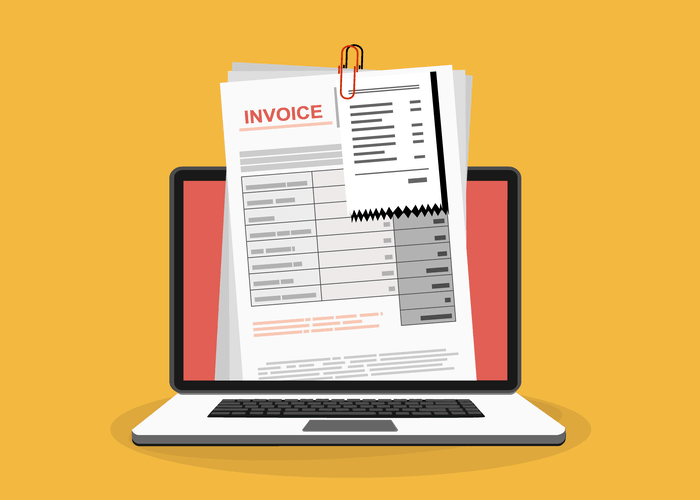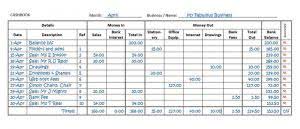
Trend analysts follow patterns in data to get a sense of your client’s needs and wants, which can change over time. The three main types of trends relate to financial implications and the effects they have on your business. By working in this field, you can help your company predict what clients are looking for currently and in the future to keep it successful. Vertical analysis is a financial analysis technique that compares financial data to a base period or benchmark to determine the relative proportions of each data component.

Uses And Importance of Horizontal Analysis
- However, the analysis reveals that the business’s expenses have increased by 30%.
- The amount and percentage differences for each line are listed in the final two columns, respectively.
- Utilize financial ratios, such as profitability ratios, liquidity ratios, and solvency ratios, to compare the company’s financial performance with industry benchmarks and competitors.
- For example, we perform a horizontal analysis of the income statement for the years ended March 31, 2023, and March 31, 2024, for Wipro Limited.
- For this example, I will carry out the analysis of the data reported for 2021 and 2022.
- By regularly monitoring key metrics like revenue and expenses, companies can make timely adjustments to stay on track with their long-term goals and improve decision-making.
This approach is particularly useful for identifying year-over-year growth or decline, making it easier to pinpoint specific areas of improvement or concern. For instance, if a company’s revenue has increased by 10% while its operating expenses have only risen by 5%, this could indicate improved operational efficiency. Conversely, if expenses are growing faster than revenue, it may signal potential issues Insurance Accounting that need to be addressed. Horizontal analysis is a powerful tool for understanding and evaluating a company’s financial performance over time. By examining year-to-year changes in key financial metrics, you can identify trends, assess stability, and make informed business decisions. Remember to consider industry benchmarks, peer analysis, and best practices to ensure accurate and meaningful results.

Horizontal Analysis of Financial Statements
- Also, horizontal analysis alone may not provide a comprehensive understanding of a company’s financial health and requires additional analysis and context.
- This allows for easy comparison and identification of trends across different periods.
- Similarly, if a company’s operating expenses are higher than those of its competitors, it might highlight areas where efficiency improvements are needed.
- Upon completion of either program, gain a shareable Professional Certificate to include in your resume, CV, or LinkedIn profile.
- By following these steps, you’ll transform those intimidating columns of numbers into actionable insights.
In order to calculate the absolute change, subtract the figure from the earlier period from the figure from the later period. In the event that revenue was Rs. 100,000 in 2019 and Rs. 150,000 in 2020, the absolute change is Rs. 50,000; that is, Rs. 150,000 – Rs. 100,000. There are three main methods used for making comparisons in horizontal analysis – direct comparison, variance analysis, and percentage method.

Advantages of Horizontal Analysis
By comparing their financial data to industry averages or competitors’ financial data, businesses can gain insights into how they perform relative to their peers. Analyzing financial statements is very important, and businesses do that in routine, but the real question is how do they do that? The amount and percentage horizontal analysis formula differences for each line are listed in the final two columns, respectively.
Compound Annual Growth Rate (CAGR)
- If the revenue spike is due to a one-time event, such as a large contract or seasonal demand, it may not indicate long-term growth.
- Let us discuss what is horizontal analysis, how to perform it, and what are its advantages for the users.
- Horizontal analysis refers to the historical comparison of financial statement items from one accounting period with another.
- Despite its benefits, horizontal analysis has limitations that must be considered.
- The consolidated financial statement of Wipro Limited and its subsidiaries for the year ended March 31, 2024 is uploaded below.
Similarly, if a company’s operating expenses are higher than those of its competitors, it might highlight areas where efficiency improvements are needed. This comparative approach helps companies stay competitive and align their strategies with industry best practices. When conducting horizontal analysis, several metrics stand out as particularly informative.
Horizontal Analysis using Income Statements
- Companies can compare their financial performance against industry peers to identify strengths and weaknesses.
- Similarly, if businesses analyze the balance sheet, they should collect the balance sheets for the same period.
- Percentage changes show the year-to-year variations in financial metrics and help determine the growth or decline rate of the company’s performance.
- The cost of revenues also declined by 2.2%, from Rs 430,297 million to Rs 420,998 million during the same period.
- The latter two tend to go hand-in-hand because the most useful benchmark against which to compare recent performance is most often the preceding period.
- This means businesses must gather the financial statements for the same period, such as two or more years, to compare the financial data and identify trends and patterns.
To further understand the application, let’s consider another example involving fixed assets net income over three years.

It can be revenue, COGS, expenses or any other financial ratio you want to track. This way, you’ll get a snapshot of the company’s performance over time, and will be able to compare them. By tracking changes across periods, this method helps businesses spot patterns and make informed decisions. Given below is a horizontal analysis in excel of a comparative income statement (i.e. year 1 – base, year 2, and year 3). Consistency constraint here means that the same accounting methods and principles must be used each year since they remain constant over the years.
